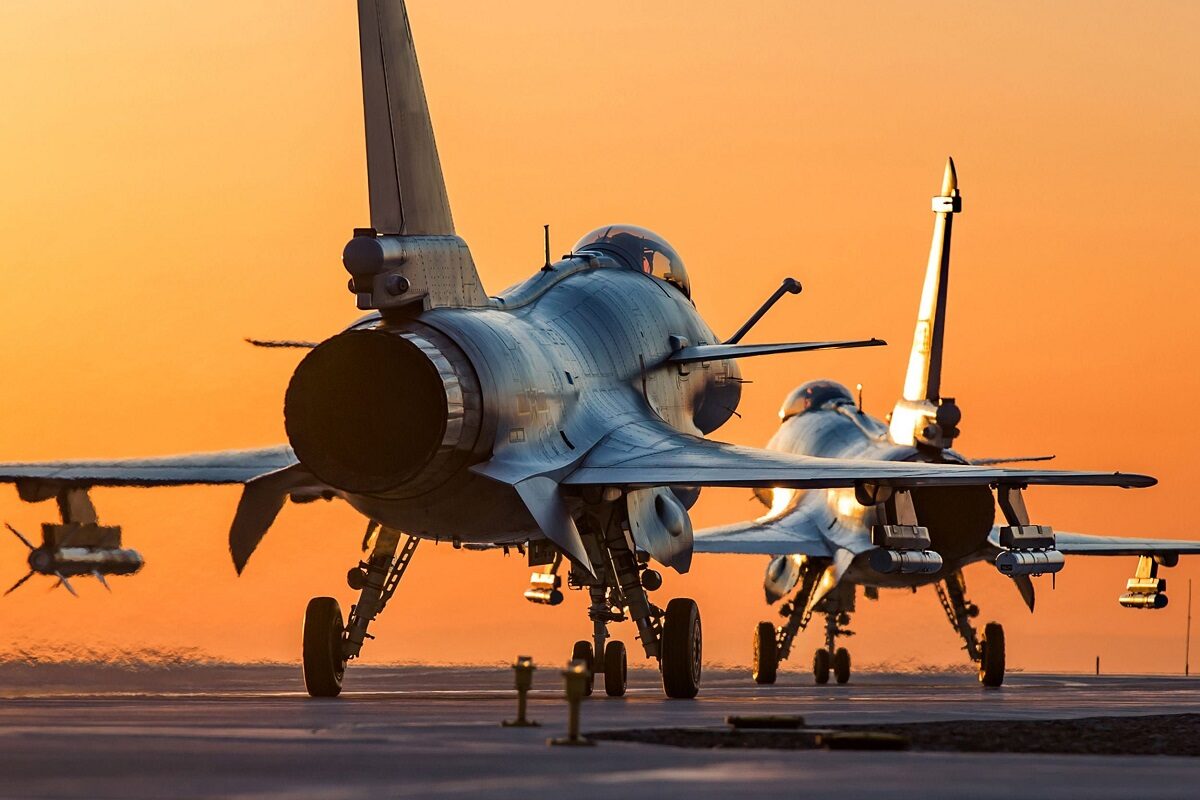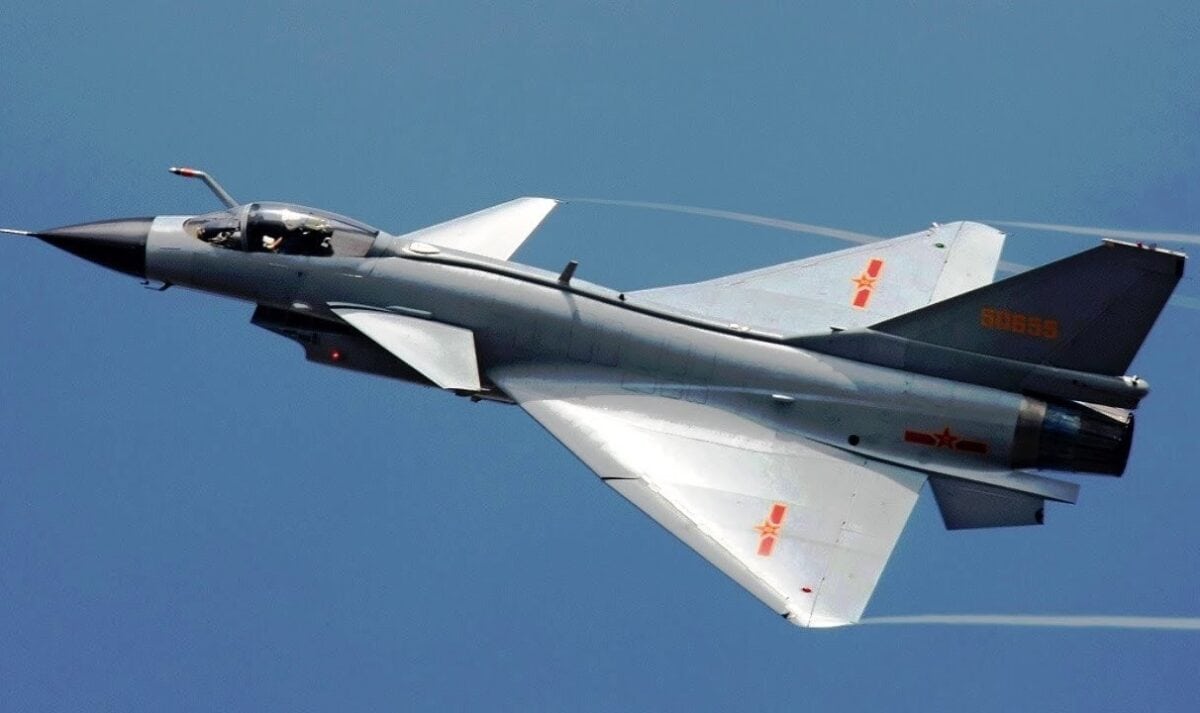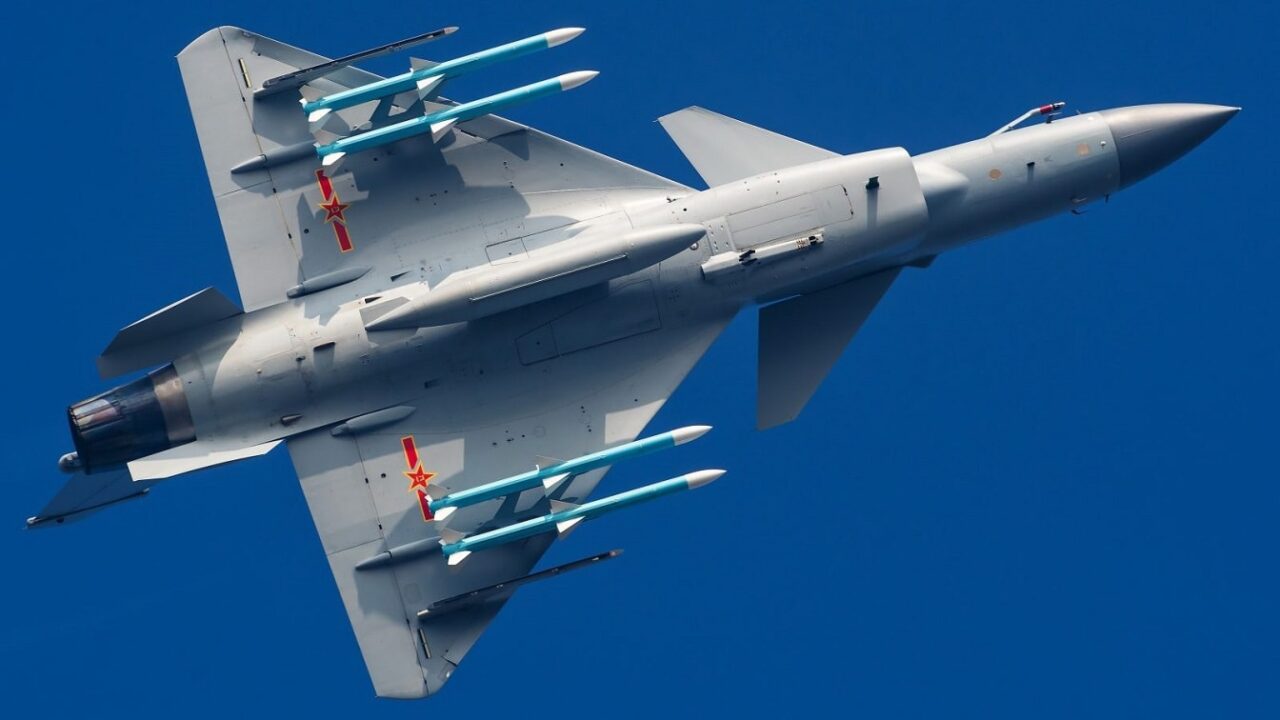China’s Multirole Workhorse: the Chengdu J-10 – The Chengdu J-10 fighter is a reliable mainstay multirole aircraft of the Chinese People’s Liberation Army Air Force (PLAAF). Otherwise known by its NATO reporting name “Firebird” or its Chinese name “Vigorous Dragon”, China’s J-10 was Beijing’s first domestic foray into designing and producing a fourth-generation fighter.
The development of the Firebird began in 1988 as an answer to the Soviet Su-27 Flanker and MiG-29 Fulcrum, amid the backdrop of the ongoing rivalry between the two then-communist powers.
Designed by the Chengdu Aircraft Design Institute, China’s J-10 was devised with state-of-the-art radar and missile technology in mind and was intended to be a replacement for the J-7 fighter aircraft and the Q-5 ground-attack aircraft.
China’s initial version of the fighter, the J-10A, was a relatively basic fourth-generation fighter that entered service in 2004.
The J-10B, an upgraded version of the fighter, had its first flight in 2008 and entered service in 2014, including air-refueling capability and improvements in its thrust-vector capabilities and radar technologies.
Most recently in the Firebird’s development, the J-10C variant notably is the first Thunderbird to include a domestically produced engine. China’s Shenyang WS-10 Taihang engine was first spotted on an operational J-10 airframe in March 2021, indicating that the PLAAF was transitioning away from using the Russian Saturn AL-31 engine in J-10 airframes.
The airframe of the J-10 resembles the canceled Israeli Lavi fighter aircraft, which drew heavily from the U.S. F-16. Each Firebird includes five fuselage hardpoints and three wing hardpoints, which are designed to carry either Chinese Python 3 or Russian Vympel R-73 air-to-air missiles.
The J-10 can also carry Chinese laser-guided bombs, anti-ship missiles, and land-attack missiles in keeping with its multirole classification.
The aircraft’s official specifications indicate a maximum flight speed of 1,350 kilometers per hour, a combat range of 1,240 kilometers, and a patrol range of 2,600 kilometers with air refueling support.
The J-10C includes a modern Active electronically scanned array (AESA) radar system, which would allow the PLAAF to continue to employ the Firebird into the medium-term future, just as the United States Air Force plans to employ the F-16 alongside newer airframes.
To date, no variant of the J-10 has been operationally tested or experienced combat like some of its fourth-generation peers such as the F-16 or Su-27. Nonetheless, China’s PLAAF leadership has assigned the J-10 the role of the “backbone” of the air force. Given the Firebird’s versatility as a multirole fighter and the inclusion of AESA radar in the J-10C, the J-10 appears to hold its own on paper in a matchup with other aircraft of a similar generation and age, such as the F-16.
Outside of China, the J-10 most recently made news when China and Pakistan inked a deal for Islamabad to buy at least 25 J-10s. The first delivery of Firebirds came as recently as March 2022, when six of the jets arrived in Pakistan to much fanfare and celebration attended by former Pakistani Prime Minister Imran Khan and Air Chief Marshal Zaheer Ahmed Baber Sidhu.
Outside observers have noted that Pakistan’s purchase of an export version of the J-10C came after the Indian Air Force’s February 2019 airstrike on an alleged terrorist training camp on Pakistani, which kicked off a series of skirmishes between the air forces of India and Pakistan, as well as India’s purchase of 36 French Dassault Rafale fighters.

Image: Creative Commons.

J-10 Fighter. Image Credit: Creative Commons.

A Chengdu J-10 fighter of the People’s Liberation Army Air Force.
The J-10’s role as China’s principal multi-role aircraft will ensure that it remains in use by the PLAAF for the foreseeable future. The sale of Firebirds to Pakistan could also open the door to future deals with other Chinese partners.
Wesley Culp is a Research Fellow at the Center for the Study of the Presidency and Congress. He regularly writes on Russian and Eurasian leadership and national security topics and has been published in The Hill and the Diplomatic Courier. He can be found on Twitter @WesleyJCulp.

